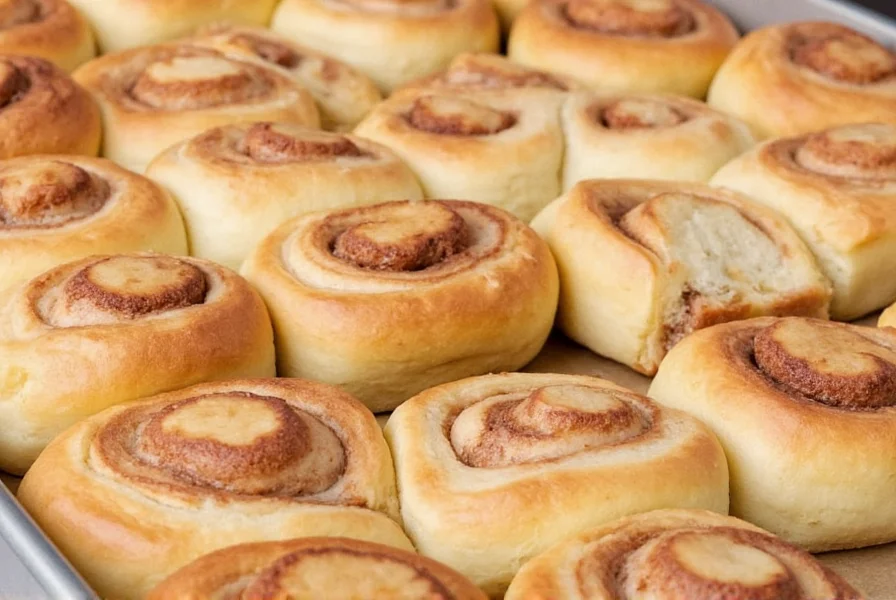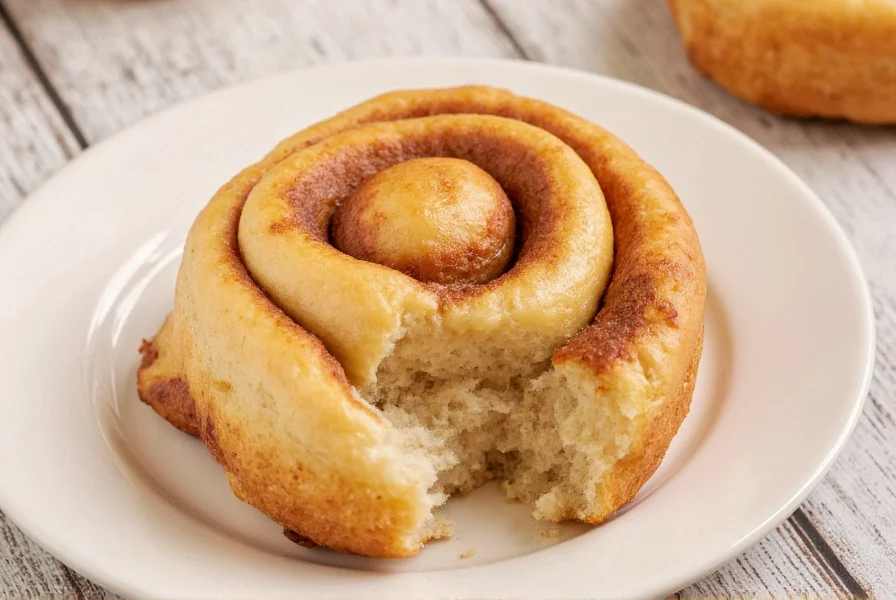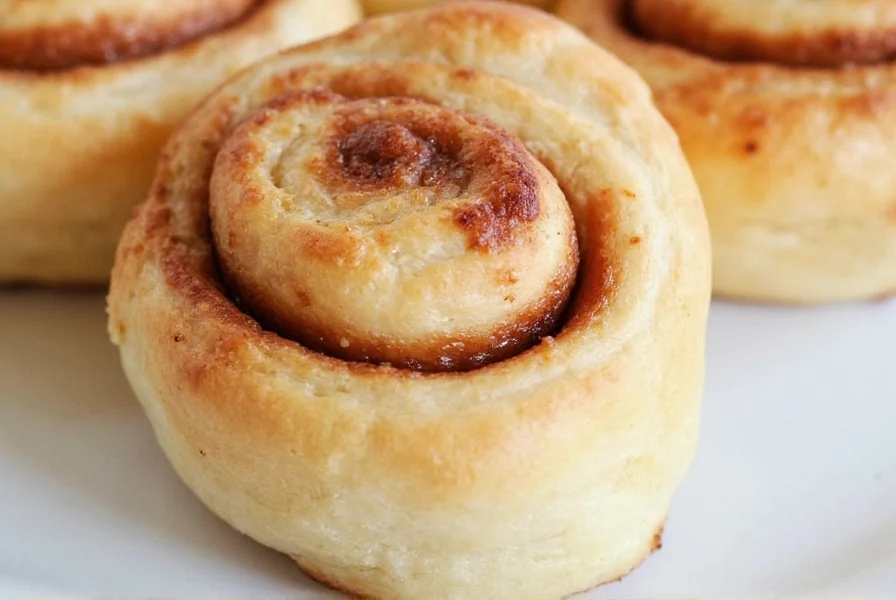Creating perfect homemade cinnamon rolls requires attention to detail and understanding the science behind the ingredients. Whether you're a beginner baker or an experienced chef, mastering this classic pastry involves balancing texture, flavor, and technique. This comprehensive guide provides everything you need to bake professional-quality cinnamon rolls in your home kitchen.
The Essential Components of Perfect Cinnamon Rolls
Successful cinnamon rolls depend on three critical elements working in harmony: the dough, the filling, and the frosting. Each component requires specific ingredients and techniques to achieve that signature soft texture and rich flavor.
Dough Fundamentals
The foundation of any great cinnamon roll recipe is the dough. Proper yeast activation is crucial—water temperature should be between 105°-115°F (40°-46°C). Too hot and you'll kill the yeast; too cold and it won't activate properly. For best results when making easy cinnamon roll recipe for beginners, use bread flour which contains more gluten than all-purpose flour, resulting in a better structure.

Perfect Cinnamon-Sugar Filling Ratio
The ideal cinnamon-to-sugar ratio creates that distinctive flavor without overwhelming the palate. Professional bakers recommend:
| Ingredient | Amount per 2 cups sugar | Effect |
|---|---|---|
| Ground Cinnamon | 2-3 tablespoons | Optimal flavor without bitterness |
| Brown Sugar | 1 cup | Adds moisture and caramel notes |
| Butter (melted) | 1/2 cup | Creates swirls and prevents dryness |
Classic Homemade Cinnamon Rolls Recipe
This tested recipe produces consistently soft, flavorful cinnamon rolls with a perfect balance of sweetness. Follow these steps for best cinnamon roll recipe from scratch results.
Ingredients
Dough:
- 1 cup warm whole milk (110°F)
- 2 1/4 teaspoons active dry yeast
- 1/4 cup granulated sugar
- 1/3 cup unsalted butter, melted
- 2 large eggs, room temperature
- 4-4 1/2 cups bread flour
- 1 teaspoon salt
Filling:
- 1/2 cup unsalted butter, softened
- 1 cup packed brown sugar
- 1/4 cup granulated sugar
- 2 1/2 tablespoons ground cinnamon
- 1/4 teaspoon salt
Cream Cheese Frosting:
- 4 ounces cream cheese, softened
- 1/4 cup unsalted butter, softened
- 1 cup powdered sugar
- 1/2 teaspoon vanilla extract
- Pinch of salt
Step-by-Step Instructions
- Mix dough ingredients: In a large bowl, combine warm milk, yeast, and 1 tablespoon sugar. Let sit for 5-10 minutes until foamy. Add remaining sugar, melted butter, eggs, 2 cups flour, and salt. Mix until combined.
- Knead dough: Gradually add remaining flour until dough pulls away from sides of bowl. Knead for 5-7 minutes until smooth and elastic. Over-kneading creates tough rolls.
- First rise: Place dough in greased bowl, cover with damp cloth. Let rise in warm place for 1-1.5 hours until doubled in size. Proper how long to let cinnamon rolls rise is critical for texture.
- Prepare filling: Mix brown sugar, granulated sugar, cinnamon, and salt. Set aside.
- Roll out dough: Punch down risen dough and roll into 18x12 inch rectangle on floured surface.
- Add filling: Spread softened butter evenly over dough, then sprinkle with sugar-cinnamon mixture.
- Roll and cut: Tightly roll dough starting from long side. Cut into 12 equal pieces using dental floss for clean cuts.
- Second rise: Place rolls in greased 9x13 inch pan. Cover and let rise 30-45 minutes until puffy.
- Bake: Preheat oven to 350°F (175°C). Bake for 22-25 minutes until golden brown. Don't overbake—rolls continue cooking slightly after removal.
- Frost: Mix frosting ingredients until smooth. Spread over warm (not hot) rolls.

Common Cinnamon Roll Problems and Solutions
Even experienced bakers encounter issues with cinnamon rolls. Understanding these troubleshooting cinnamon roll problems will help you achieve consistent results:
- Dense rolls: Usually caused by too much flour or insufficient rising time. Measure flour properly using the spoon-and-level method.
- Flat rolls: Over-proofing causes rolls to collapse during baking. Watch for visual cues rather than strict timing.
- Burnt bottoms: Place baking pan on a lower rack or use a double pan for even cinnamon roll baking temperature distribution.
- Filling leaking out: Ensure butter is properly softened but not melted when spreading on dough.
- Dry rolls: Overbaking or insufficient butter in filling. Set timer and check at minimum recommended time.
Popular Cinnamon Roll Variations
Once you've mastered the classic recipe, try these delicious variations for different dietary needs and flavor preferences:
Vegan Cinnamon Rolls
For those seeking vegan cinnamon roll recipe options, substitute dairy ingredients with plant-based alternatives:
- Replace milk with unsweetened almond or soy milk
- Use vegan butter or coconut oil
- Substitute eggs with flax eggs (1 tablespoon ground flaxseed + 3 tablespoons water per egg)
- Use vegan cream cheese for frosting
Gluten-Free Cinnamon Rolls
Creating gluten-free cinnamon roll alternatives requires specific adjustments:
- Use a quality gluten-free flour blend with xanthan gum
- Increase liquid ingredients slightly as GF flours absorb more moisture
- Add 1 teaspoon apple cider vinegar to improve rise
- Expect slightly denser texture than traditional rolls
Storage and Reheating Tips
Proper storage maintains the soft texture of your cinnamon rolls:
- Room temperature: Store in airtight container for up to 2 days
- Refrigerator: Keep for up to 5 days (though texture may degrade)
- Freezer: Wrap individual rolls tightly and freeze for up to 3 months
For best results when reheating, place roll on microwave-safe plate and heat for 10-15 seconds. Alternatively, warm in a 300°F oven for 5 minutes for crisper texture. Never microwave more than 20 seconds as this creates tough, rubbery rolls.
Advanced Techniques for Perfect Cinnamon Rolls
Professional bakers use these techniques for how to make soft cinnamon rolls with exceptional texture:
- Tangzhong method: Cook a small portion of flour and liquid to create a roux that retains moisture
- Overnight refrigeration: Let shaped rolls proof slowly in the refrigerator for enhanced flavor development
- Steam injection: Place a pan of water in the oven during baking to create a moist environment
- Temperature control: Use a thermometer to ensure dough maintains optimal temperature during rising











 浙公网安备
33010002000092号
浙公网安备
33010002000092号 浙B2-20120091-4
浙B2-20120091-4